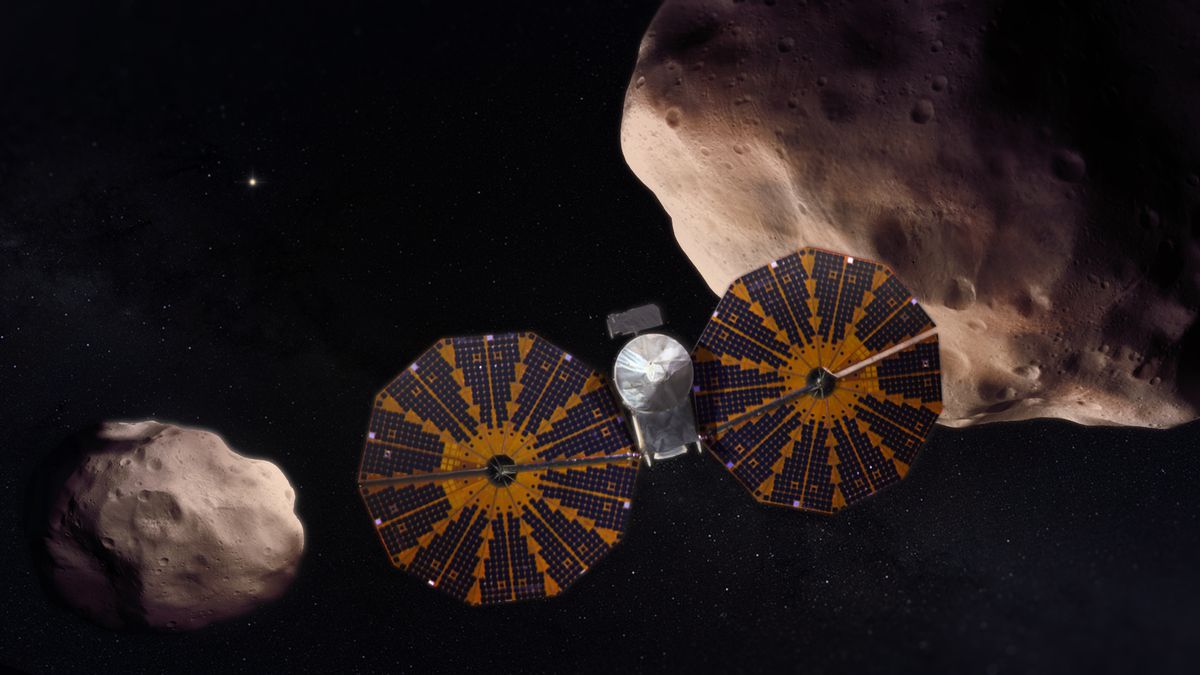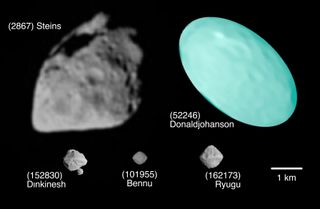Next month NASA's Lucy probe will visit an asteroid that's been waiting 150 million years to say hello
From - Space.com
By - Julian Dossett
Edited by - Amal Udawatta

The next stop for NASA's asteroid-hopping spacecraft Lucy is a space rock named Donaldjohanson, an object researchers recently learned is about 150 million years old.
Lucy will fly past the three-mile-wide (five-kilometer-wide) asteroid on April 20, but the trip mostly serves as a rehearsal for other asteroid encounters down the road — namely, Lucy's final destination: Jupiter's Trojan asteroids. Over a 12-year mission, Lucy is scheduled to visit a total of 11 asteroids across two swarms that are leading and trailing Jupiter.
Still, every asteroid counts for this mission, and a new paper from researchers at the Southwest Research Institute branch in Boulder, Colorado suggests Donaldjohanson may hold a few welcome surprises. It's particularly likely considering how the last asteroid Lucy flew by, Dinkinesh, had a few treats of its own.
"Based on ground-based observations, Donaldjohanson appears to be a peculiar object," Simone Marchi, Lucy's deputy principal investigator at Southwest Research Institute and lead author of the new paper, said in a statement.
Marchi and his fellow researchers used computer modeling to figure out that the asteroid was formed roughly 150 million years ago as the result of another, larger asteroid breaking apart. In the time since, the team also learned, Donaldjohanson's orbit and spin have evolved significantly.
"Data indicates that it could be quite elongated and a slow rotator, possibly due to thermal torques that have slowed its spin over time," David Vokrouhlický, a professor at the Charles University, Prague, and co-author of the research, said in the same statement.
During next month's flyby, Lucy will collect data on the asteroid's shape, surface geology and cratering history. The data Lucy will gather from Donaldjohanson is especially important because that information is only accessible from a close proximity.

Bennu and Ryugu are two asteroids that spacecraft have sampled in previous missions. NASA's OSIRIS-REx mission collected samples from Bennu, and the Hayabusa2 asteroid-sampling spacecraft from the Japanese Aerospace Exploration Agency (JAXA) nabbed samples from Ryugu.
"We can hardly wait for the flyby because, as of now, Donaldjohanson's characteristics appear very distinct from Bennu and Ryugu. Yet, we may uncover unexpected connections," Marchi added.
The Trojan asteroids interest researchers because they hold ancient information on how our solar system came to be. "These relics are effectively fossils of the planet formation process, holding vital clues to deciphering the history of our solar system," Hal Levison, the mission's principal investigator from the Southwest Research Institute, said in the same statement.
The Lucy spacecraft launched Oct. 16, 2021 from NASA's Kennedy Space Center in Florida atop a United Launch Alliance (ULA) Atlas V rocket. "Earth-based observing and theoretical models can only take us so far — to validate these models and get to the next level of detail we need close-up data," Keith Noll, Lucy project scientist at NASA's Goddard Space Flight Center in Greenbelt, Maryland, said in the same statement.
- Get link
- X
- Other Apps
Labels
Astronomy & Space Science- Get link
- X
- Other Apps
Comments
Post a Comment